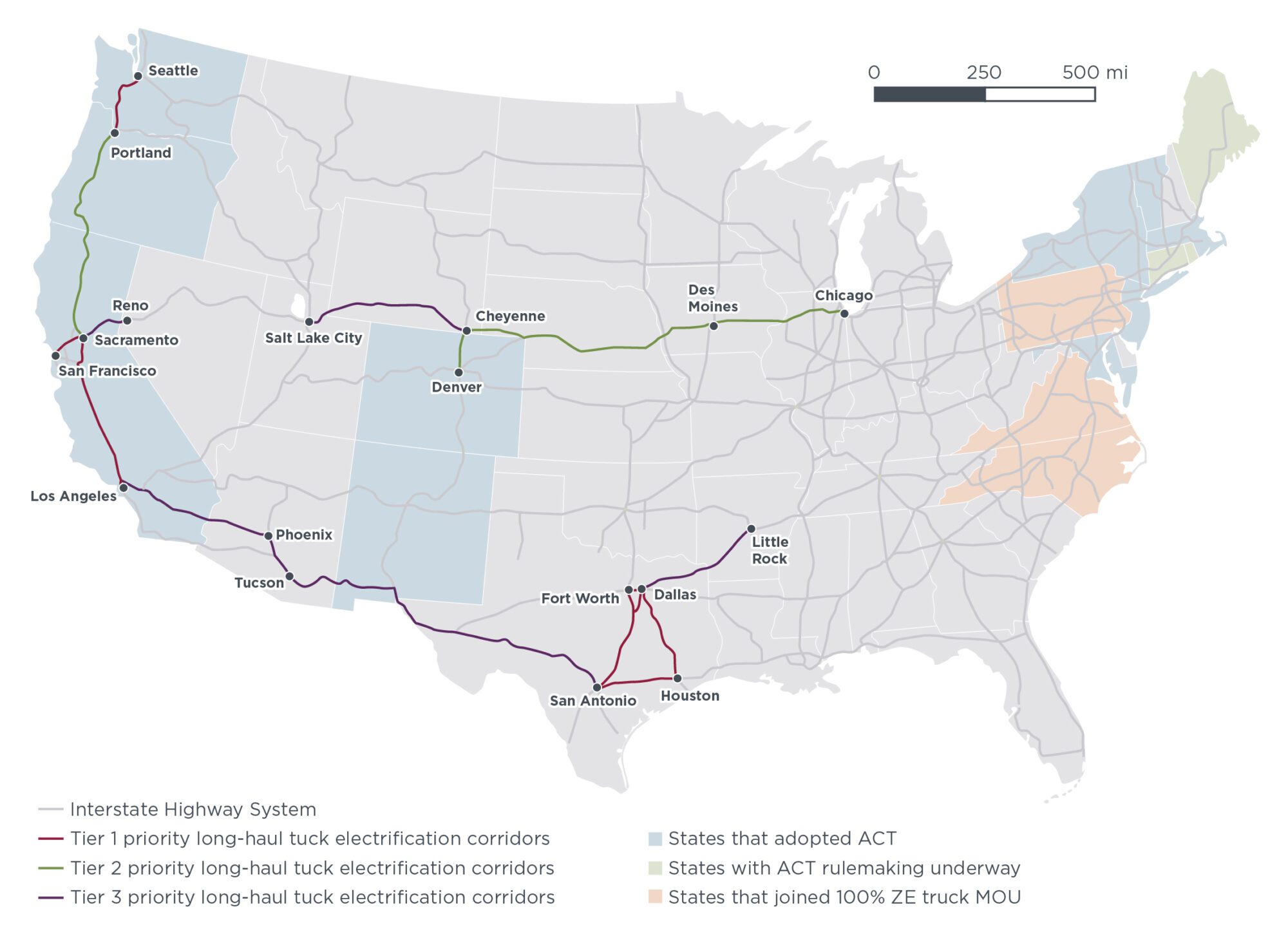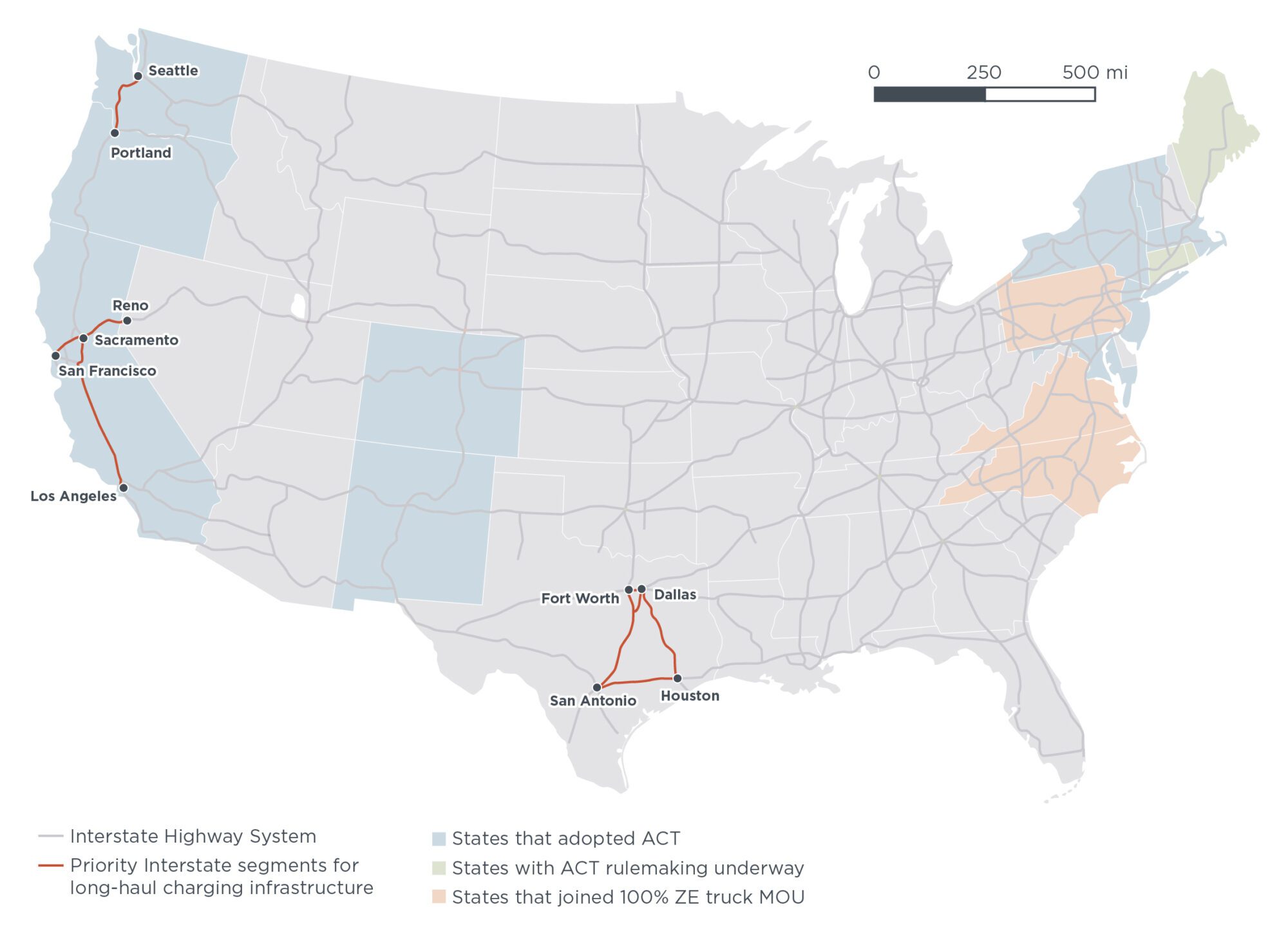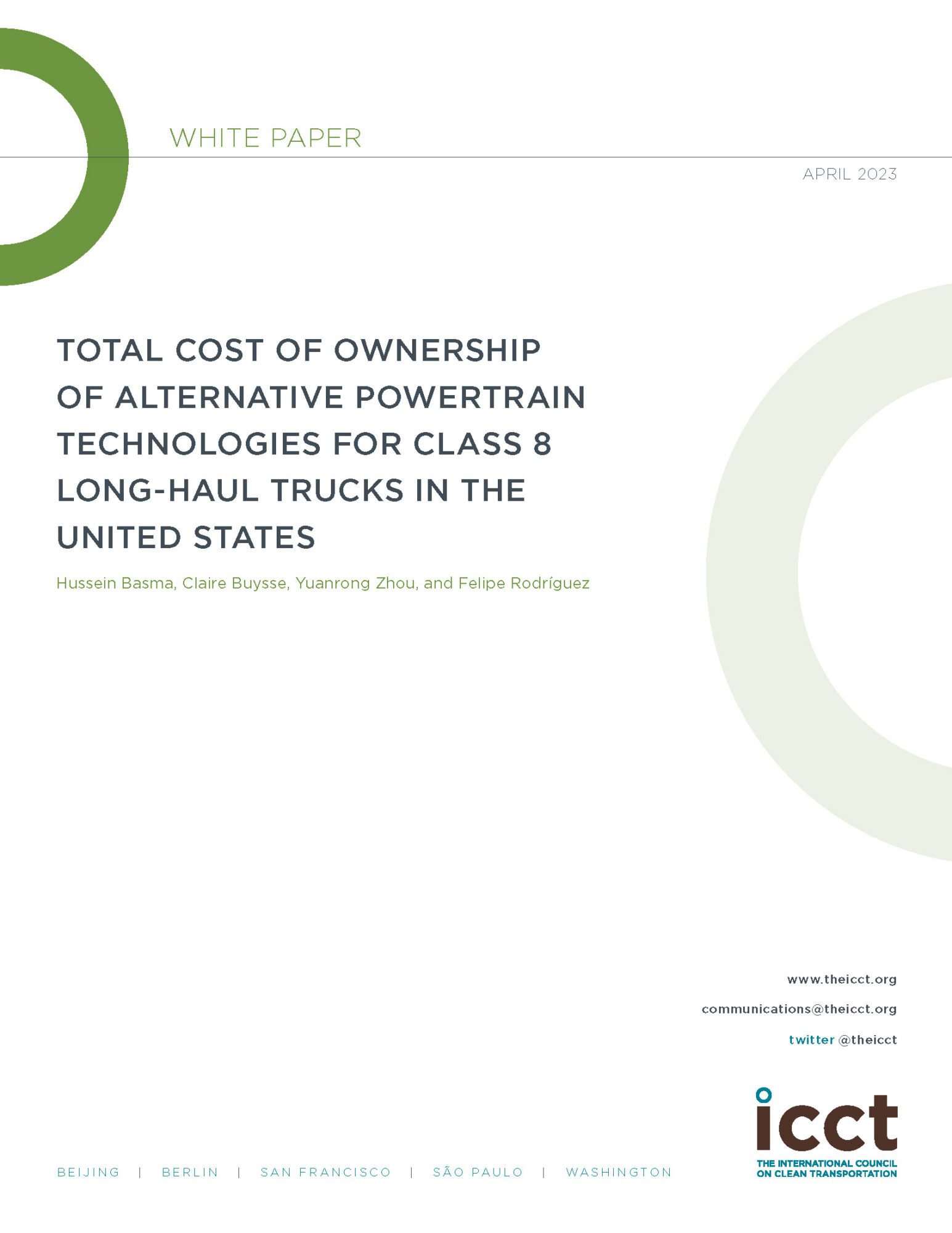Blog
Deploy charging infrastructure in “no regrets” freight zones and corridors to keep U.S. commercial truck electrification aligned with climate goals
Earlier this year, the U.S. Environmental Protection Agency (EPA) proposed a third phase of greenhouse gas standards on heavy-duty vehicles and engines for model years 2027 and later, to accelerate road freight decarbonization. Many public comments supported it, but truck manufacturers including Volvo and Daimler have asked the EPA for a three-year delay of the rule. Their principal argument is that charging infrastructure will not be available to support the number of electric truck sales the rule would encourage.
Will infrastructure not be available in sufficient quantities? Well, we see that significant public investment has already been made, private investments have already led to groundbreaking on charging sites, ribbons have been cut at publicly accessible truck charging depots, and truck manufacturers themselves are building the infrastructure.
Beyond that, the reality is we don’t need to build everything everywhere, all at once. It makes strategic and economic sense in the near term to electrify the largest number of trucks along the smallest number of roadways where the business case is strongest (“no regrets” zones and corridors). And the assessment we present below shows that strategic infrastructure deployment in a limited number of freight hubs and corridors would be enough to ensure the EPA proposal can be met with sales of electric trucks.
We illustrate this with the infrastructure needs of long-haul trucks, just one of many vehicle categories covered in the EPA proposal. Here we define a long-haul truck as a vehicle that travels 500 miles daily and a long-haul corridor as one continuous segment at least 300 miles long.
Despite being less than 20% of the vehicles in the U.S. heavy-duty fleet, long-haul trucks are responsible for an outsized share of daily traffic volume (Table 1). Previous analysis demonstrated that battery-powered long-haul tractors offer the strongest business case when compared with other zero-emission alternatives. When coupled with megawatt charging in the second half of this decade, battery-powered long-haul tractors are estimated to be the only zero-emission powertrain with the potential to achieve a lower cost per mile than long-haul diesel tractors.
| Vehicle stock | Zero-emission vehicle stock | Fleet-wide average daily vehicle miles traveled (eVMT) | Fleet-wide average daily zero-emission vehicle miles traveled (eVMT) | Fleet-wide average daily zero-emission vehicle energy consumption (MWh) | |
|---|---|---|---|---|---|
| Class 4-8 long-haul vehicles | 2 million | 70,000 | 469 million | 18 million | 35,000 |
| All Class 4-8 vehicles | 11 million | 1.1 million | 1.1 billion | 94 million | 140,000 |
| Long-haul vehicle share | 18% | 6% | 43% | 19% | 25% |
To assess the minimum infrastructure needs of these long-haul trucks in 2030, we: (1) examined freight traffic patterns, including our own national infrastructure analysis ; (2) revisited the infrastructure work of CALSTART and EPRI to inform our efforts and consider our analysis against their assumptions; and (3) consulted with industry experts to understand which long-haul corridors to prioritize. Our goal was to find the smallest number of roads with the highest traffic volume that could support 18 million long-haul electric truck miles (eVMTs) in 2030. These 18 million eVMTs are the electric truck activity spurred on by the Inflation Reduction Act, as estimated under our moderate scenario in this paper. That amount would also be enough to keep zero-emission trucks in commercial road freight aligned with international climate goals. We also considered a second scenario: the charging infrastructure for long-haul trucks needed to match the EPA Phase 3 proposal assuming manufacturers comply only with electric vehicle sales.
First, we find that public charging plazas along 1,800 miles of U.S. roads, identified as Tier 1 in Figure 1, would be enough to align long-haul truck electrification with international climate goals in 2030. The Tier 1 corridors are just 0.06% of paved road miles in the United States in 2020 or about 3% of the U.S. National Highway Freight Network. To arrive at 18 million daily eVMT on these corridors, we assume that one out of every four long-haul truck miles are electric. Forthcoming sales requirements for zero-emission trucks in California, Oregon, and Washington paired with total cost of ownership parity expected between battery-electric and diesel-powered long-haul tractors in Texas by 2027 put this within reach.

Figure 1. Tier 1, 2, and 3 priority corridors for electrifying long-haul truck activity in 2030 in line with international climate goals.
The Tier 2 corridors are where additional infrastructure would be needed in 2030 to achieve 18 million daily eVMT if instead only 15% of long-haul truck miles along Tier 1+2 corridors are electric. Tier 3 corridors expand the map and show where infrastructure would be needed if only 10% of long-haul truck miles along Tier 1+2+3 corridors are electric in 2030. Even the combined Tier 1, 2, and 3 corridors are still just 0.2% of paved road miles in the United States in 2020 or less than 10% of the U.S. National Highway Freight Network.
Second, the EPA proposal requires even less infrastructure than the first scenario because fewer electric trucks would be on U.S. roads. We project that the EPA proposal could generate close to 9 million long-haul eVMT per day, half as much as considered above. Approximately 1,000 total road miles across three corridors in California and Texas would be enough to comply with that; this assumes that 25% of long-haul truck miles on these roads are electric in 2030 and that manufacturers choose to comply only with electric truck sales, which the EPA rule would not require.
If, instead, only 10% of long-haul truck miles are electric, charging needs resulting from the EPA rule would require infrastructure deployment along 2,100 miles of the Interstate Highway System. This is shown in Figure 2 and the amount is still a fraction of a percent of U.S. paved roads and less than 4% of the national highway freight network.

Figure 2. Priority corridors for electrifying long-haul activity in line with maximum electrification required by the EPA Phase 3 proposed standard if 10% of long-haul truck miles are electric in 2030.
Despite manufacturer concerns, this analysis highlights the limited nature of the infrastructure required to meet the projected needs of long-haul electric trucks in 2030. Even an electrification scenario more ambitious than the EPA proposal and aligned with international climate goals would require public charging infrastructure for long-haul trucks across less than 1% of U.S. roads. Infrastructure at this scale would not be expected to be a major barrier to achieving greater greenhouse gas reductions, should the EPA choose to strengthen its proposal.
Deploying infrastructure in phases and starting strategically in the highest-priority locations would be enough for long-haul trucks in the near term. Our analysis shows that the infrastructure needs of the EPA proposal and of even more ambitious proposals can be met.
Author
Related Publications

TOTAL COST OF OWNERSHIP OF ALTERNATIVE POWERTRAIN TECHNOLOGIES FOR CLASS 8 LONG-HAUL TRUCKS IN THE UNITED STATES
Evaluates the total cost of ownership for diesel, battery electric, hydrogen fuel-cell, and hydrogen combustion powertrains.


